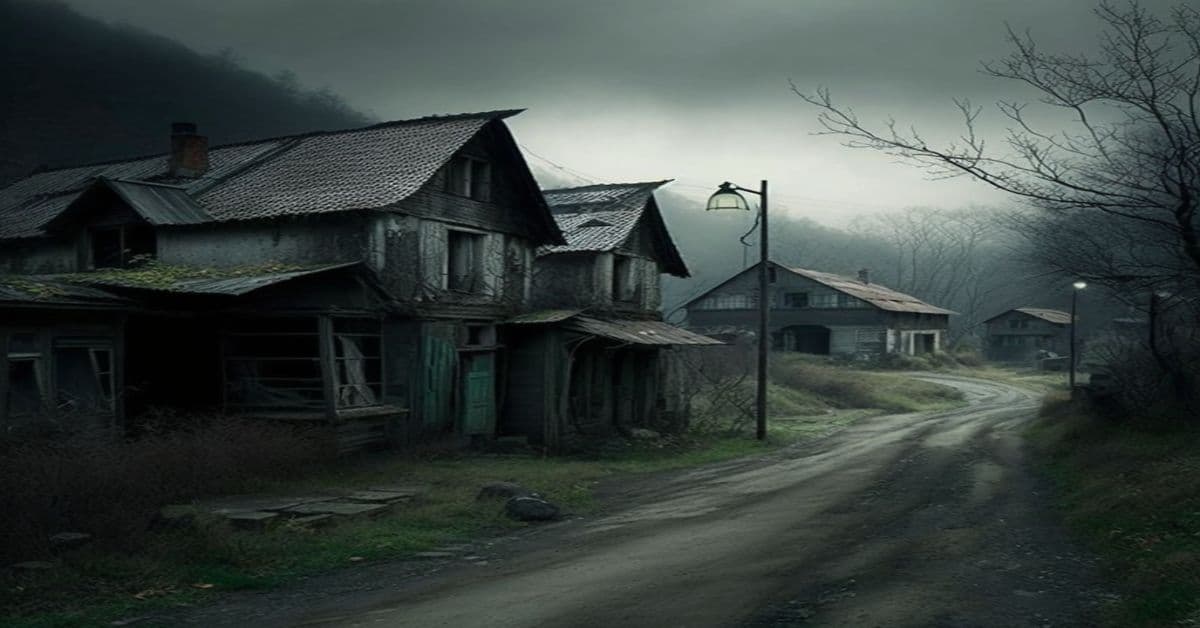Port Discovery is a town lost to time, nestled in the heart of Jefferson County, Washington. Once a bustling community established in 1792 by Captain George Vancouver, Port Discovery was rooted in the lumber industry, with a mill that operated for thirty years and contributed to the town’s prosperity.
Today, the town has all but disappeared, and the only remaining testament to its existence is an intriguing cemetery that serves as a reminder of the pioneers and sailors who once called this place home.
This article will delve into the fascinating history of Port Discovery, Washington, exploring its origins, boom, and eventual decline. Through detailed analysis and fact-based research, we will take readers on a journey through time, uncovering the remnants of this forgotten town and shedding light on the lives of those who once inhabited it.
Join us as we discover the ghost town of Port Discovery and explore the secrets hidden within its walls.
Key Takeaways
- Port Discovery, Washington, was established in 1792 as an Indian village. It grew thanks to the success of a lumber mill strategically located near the Strait of Juan de Fuca entrance.
- The town’s decline and abandonment were due to the exhaustion of timber resources, the shift of the lumber industry to other regions, and the rise of nearby Port Townsend as the area’s primary center of commerce and transportation.
- Visitors can still explore the town’s remaining buildings, ruins, and the nearby cemetery with the graves of pioneering and seafaring individuals who died far from home.
- Port Discovery’s cultural significance lies in its past as an Indian village, the presence of a Chinatown within the town during its boom, and its exploration through various techniques such as mapping and surveying.
History and Origins
The historical background of Port Discovery, Washington, which dates back to 1792, reveals that it was initially an Indian village named by Captain George Vancouver. The area was explored through various techniques, including mapping, charting, and surveying. Vancouver’s expedition was significant in discovering new lands and mapping the Pacific Northwest. He named the village Port Discovery, which would later become a bustling lumber mill town.
The cultural significance of Port Discovery lies in its past as an Indian village and the presence of a Chinatown within the town during its boom. The area was rich in cultural diversity, and the mill’s success fueled the town’s growth. However, the town’s prosperity was short-lived, eventually becoming a ghost town.
Despite this, the nearby cemetery still holds the names of pioneering and seafaring individuals who died while far from home, preserving a piece of Port Discovery’s history.
Boom and Decline
Following the establishment of the lumber mill in 1858, Port Discovery flourished like a garden in spring, but after thirty years of prosperity, it withered away like a flower in winter.
The town’s boom was brought about by the success of the lumber mill, strategically located near the entrance to the Strait of Juan de Fuca.
The mill’s brisk and prosperous operation for three decades spurred the town’s growth, with about fifty buildings including a Chinatown and a community cemetery where the remains of interesting pioneers and sailors who died far from home were buried.
However, the decline of Port Discovery was brought about by several economic factors, including the exhaustion of timber resources and the shift of the lumber industry to other regions.
The town’s population dwindled, and by the early 1900s, the mill had closed down, leaving the town abandoned.
Cultural influences may have also played a role in the town’s decline, as the nearby Port Townsend became the area’s primary center of commerce and transportation, leading to the gradual abandonment of Port Discovery.
Today, nothing remains of the mill site, and the town is considered a ghost town, a reminder of its once-thriving past.
Exploring Today
One can currently explore the remnants of a once-booming lumber mill town in Jefferson County, Washington. While the mill site itself has been completely erased, visitors can still find traces of the town’s history in the nearby cemetery, which features the graves of pioneers and sailors who died far from home.
The cemetery is a sad reminder of the town’s past and offers a glimpse into the lives of those who once called Port Discovery home. Aside from the cemetery, visitors can also explore the town’s remaining buildings and ruins.
Local legends suggest that there may be hidden tunnels and secret passageways beneath the town, which only adds to the eerie atmosphere of the site. While the town may no longer be bustling with activity, its rich history and haunting beauty make it a must-see destination for anyone interested in the Pacific Northwest’s past.
Frequently Asked Questions
What was the population of Port Discovery at its peak?
At its peak, Port Discovery had a population of at least 300. Demographic changes over time resulted in the town’s decline, and today, nothing remains of the mill site that once made the town prosperous.
Are there any preserved buildings or artifacts from the town’s mill era?
Preservation efforts for Port Discovery’s industrial relics are limited. No preserved buildings or artifacts from the town’s mill era remain. The only remaining evidence of the boomtown is the cemetery with the names of pioneers and sailors who died far from home.
What was life like for the Chinese residents of Chinatown?
The Chinese residents of Port Discovery’s Chinatown likely faced discrimination and hardship due to anti-Chinese sentiment prevalent in the late 1800s. Few records exist regarding their experiences, but it is known that Chinese culture was preserved within the community.
Were any notable events or disasters affected the town’s growth and decline?
Notable events or disasters that affected Port Discovery’s growth and decline are not recorded. However, the town’s economic factors primarily depended on the lumber mill, which attracted famous residents and contributed to the town’s prosperity.
Are there any local legends or ghost stories associated with the abandoned town?
Are there any local legends or ghost stories associated with the abandoned town of Port Discovery? Reports of haunted sightings and paranormal investigations have occurred, with some claiming to have encountered spectral figures and eerie noises within the town’s deserted buildings.


